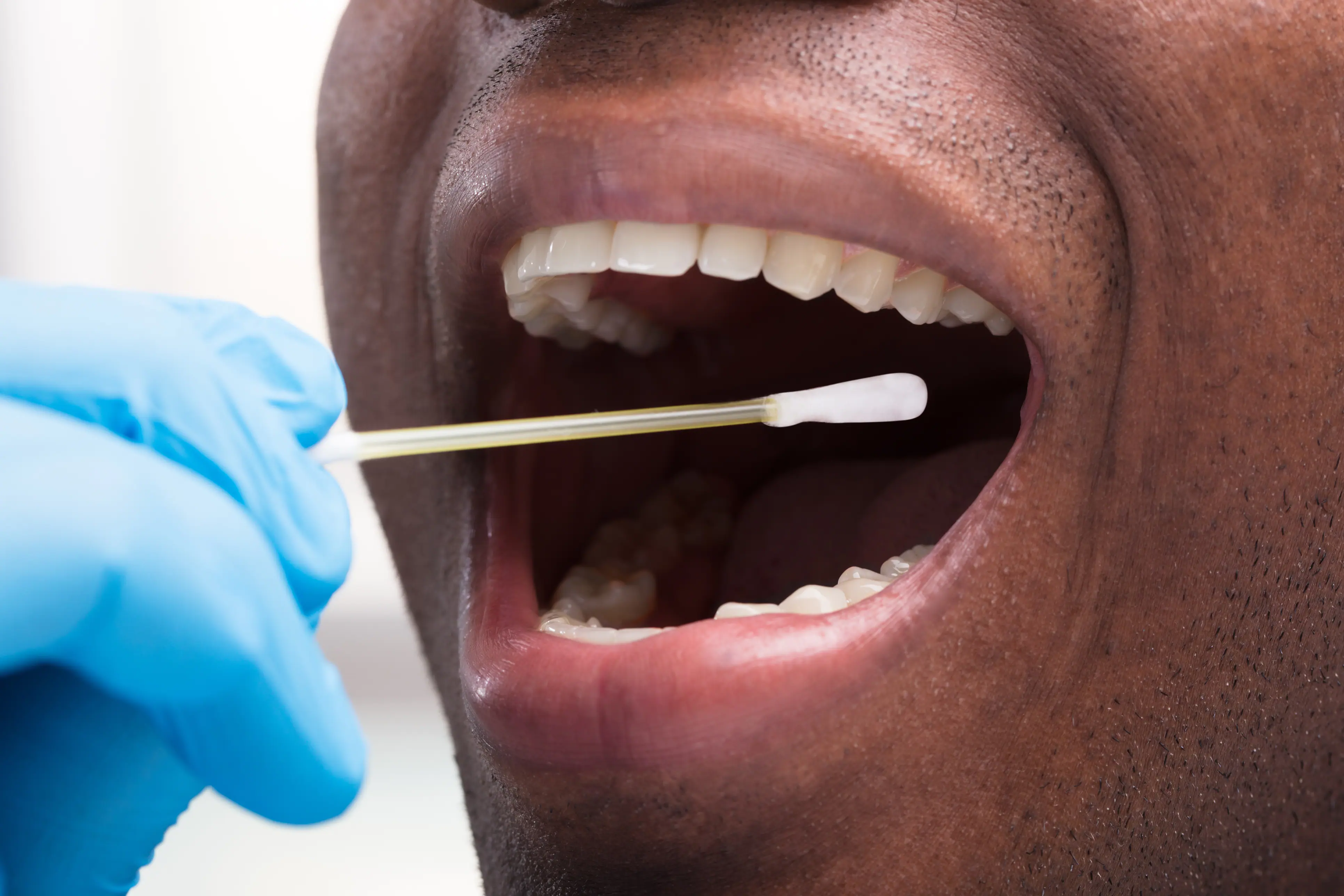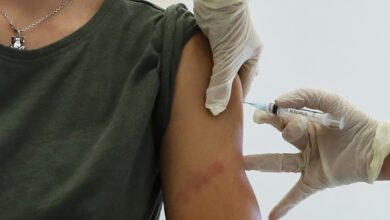Coronavirus can infect cells in the mouth, study finds

A year into the coronavirus pandemic, researchers well know that SARS-CoV-2, the scientific name for the novel virus, typically causes infection after it invades the body’s upper airways and lungs. The virus is also known to infect cells in other parts of the body, such as the digestive system and blood vessels. But new research published Thursday has identified cells in another area of the body the virus can also infect: the mouth.
Researchers with the National Institutes of Health and the University of North Carolina at Chapel Hill in a study published in the journal Nature Medicine found that not only can the virus infect cells in the mouth, but that the mouth possibly “plays a role in transmitting SARS-CoV-2 to the lungs or digestive system via saliva laden with virus from infected oral cells.”

Dr. Kevin Byrd, a research scholar and manager of Oral and Craniofacial Research at the American Dental Association Science and Research Institute who also co-led the study, said that their findings suggest that swallowed, infected saliva can “potentially transmit SARS-CoV-2 further into our throats, our lungs, or even our guts.”
((iStock))
“The potential of the virus to infect multiple areas of the body might help explain the wide-ranging symptoms experienced by COVID-19 patients, including oral symptoms such as taste loss, dry mouth and blistering,” reads a news release on the findings.
The saliva of people who have tested positive for COVID-19 is known to contain high levels of the SARS-CoV-2; some research has suggested that saliva tests could possibly be just as reliable in diagnosing the disease as nasal swabs. But questions have remained regarding where the virus in the saliva comes from.
CORONAVIRUS INFECTED LESS THAN 1% OF DENTISTS NATIONWIDE, STUDY SUGGESTS
In COVID-19 patients with nasal drainage or a bad cough, researchers have said the virus likely ends up in the saliva through the nasal drainage itself or via a mixture of saliva and mucus that is coughed up from the lungs. But how does the virus appear in the saliva of a patient who does not have respiratory symptoms?
“Based on data from our laboratories, we suspected at least some of the virus in saliva could be coming from infected tissues in the mouth itself,” said Dr. Blake Warner, an assistant clinical investigator and chief of NIDCR’s Salivary Disorders Unit who co-led the study, in a statement.
Warner and his team analyzed oral tissues from healthy people to “identify mouth regions susceptible to SARS-CoV-2 infection,” per the release.
“Vulnerable cells contain RNA instructions for making ‘entry proteins’ that the virus needs to get into cells. RNA for two key entry proteins — known as the ACE2 receptor and the TMPRSS2 enzyme — was found in certain cells of the salivary glands and tissues lining the oral cavity. In a small portion of salivary gland and gingival (gum) cells, RNA for both ACE2 and TMPRSS2 was expressed in the same cells. This indicated increased vulnerability because the virus is thought to need both entry proteins to gain access to cells. “
CARCINOGENIC: HAND SANITIZERS USED TO COMBAT COVID-19 FOUND TO HAVE TOXIC, CANCER-CAUSING CHEMICAL
Warner said the expression levels of the entry factors were similar to other regions that are already known to be susceptible to infection from the novel coronavirus, such as the tissue lining the upper airways, for instance.
After identifying this key factor, the researchers then took oral tissue samples from living and deceased COVID-19 patients. In patients who had died, SARS-CoV-2 RNA was present in just over half of the salivary glands they looked at, per the news release.
What’s more, “in salivary gland tissue from one of the people who had died, as well as from a living person with acute COVID-19, the scientists detected specific sequences of viral RNA that indicated cells were actively making new copies of the virus–further bolstering the evidence for infection,” they said.
The researchers later determined that infected mouth tissue was likely a source of the virus in saliva.
“In people with mild or asymptomatic COVID-19, cells shed from the mouth into saliva were found to contain SARS-CoV-2 RNA, as well as RNA for the entry proteins,” they noted.
This prompted the researchers to take saliva samples from eight people who were infected with COVID-19 but were asymptomatic, later combining these samples with healthy cells grown in a dish.
“Saliva from two of the volunteers led to the infection of the healthy cells, raising the possibility that even people without symptoms might transmit infectious SARS-CoV-2 to others through saliva,” they found.
“Finally, to explore the relationship between oral symptoms and virus in saliva, the team collected saliva from a separate group of 35 NIH volunteers with mild or asymptomatic COVID-19. Of the 27 people who experienced symptoms, those with the virus in their saliva were more likely to report loss of taste and smell, suggesting that oral infection might underlie oral symptoms of COVID-19.”
The researchers ultimately concluded that their findings suggest the mouth — specifically the infected oral cells — likely plays a more significant role in coronavirus infection than previously thought.
CLICK HERE FOR FULL CORONAVIRUS COVERAGE
Dr. Kevin Byrd, a research scholar and manager of Oral and Craniofacial Research at the American Dental Association Science and Research Institute who also co-led the study, said that their findings suggest that swallowed, infected saliva can “potentially transmit SARS-CoV-2 further into our throats, our lungs, or even our guts.”
Though more research on the topic is needed to further confirm the findings, Warner said the study reveals a “potentially underappreciated role for the oral cavity in SARS-CoV-2 infection.”
“Our study could open up new investigative avenues leading to a better understanding of the course of infection and disease. Such information could also inform interventions to combat the virus and alleviate oral symptoms of COVID-19,” Warner added.
Source link





